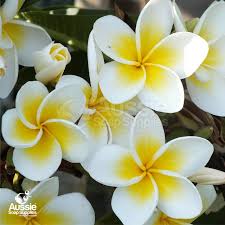Frangipani: The Enchanting Plumeria Flowering Plant
Discover the beauty of frangipani, also known as plumeria. This stunning flowering plant is celebrated for its striking appearance and enchanting fragrance, making it a favorite in gardens and landscapes.
5/30/20254 min read


Introduction to Frangipani
Frangipani, scientifically known as Plumeria, is a flowering plant renowned for its striking appearance and enchanting fragrance. These plants are particularly recognized for their vibrant pink and red trumpet-shaped flowers, which bloom throughout the year in many tropical and subtropical regions. The frangipani tree, characterized by its thick, succulent branches and unique swollen base, often resembles a miniature bonsai, adding to its architectural appeal.
The leaves of the frangipani are elongated and glossy, providing a stunning backdrop to the vivid blossoms. The flowers themselves have a distinctive five-petal structure, and their soft, waxy texture contrasts beautifully with the plant's robust foliage. In various cultures, the frangipani holds considerable significance, often symbolizing love, devotion, and immortality. It is a common sight in gardens and landscapes around the world, frequently associated with tropical paradises, spirituality, and heritage.
Additionally, frangipani is valued not only for its aesthetic attributes but also for its role in traditional medicine, as several species possess various therapeutic properties. The flowers are commonly used in leis and other ceremonial garlands, especially in places like Hawaii, where they embody the spirit of hospitality. This multifaceted nature of frangipani underscores its appeal beyond mere ornamental value, inviting both admiration and respect. As we delve deeper into the various aspects of frangipani, it becomes evident that this magnificent plant is more than just a beautiful bloom; it is a living symbol of cultural identity and natural beauty.
Different Varieties of Frangipani
Frangipani, a beautifully fragrant flower commonly found in tropical regions, showcases a variety of species, each adorned with unique features and characteristics. Among these, the native frangipani (Plumeria rubra) and the red frangipani (Plumeria acuminata) stand out due to their distinctive colors and fragrances. The native frangipani is known for its vibrant flowers, which typically bloom in shades of yellow, orange, and pink, exuding a sweet, citrus-like aroma that attracts pollinators.
The red frangipani, in contrast, presents a striking appearance with deep red to burgundy blossoms. This variety is particularly remarkable for its bold color and is often sought after for landscaping due to its eye-catching aesthetic. Both varieties thrive in full sunlight and well-drained soil, making them hardy choices for gardeners looking to enhance their outdoor spaces. However, their growing conditions slightly differ; the native frangipani appreciates a bit more humidity, while the red frangipani is more drought-tolerant.
Additionally, bloom times vary between these two species. The native frangipani tends to bloom prolifically from the late spring to early autumn, while the red frangipani may produce blossoms throughout the year in optimal conditions. When selecting a frangipani for your garden or landscape, consider not only the visual appeal but also the fragrance and bloom frequency. If fragrant flowers are a priority, the native frangipani may be preferable, while for vibrant color and resilience in dry conditions, the red frangipani could be the ideal choice.
In conclusion, understanding the differences among the various frangipani species allows gardeners and enthusiasts to make informed decisions that enhance their landscapes while appreciating the beauty and significance of these enchanting blooms.
Frangipani in Fragrances and Skincare
Frangipani, with its captivating scent and vibrant appearance, plays a significant role in the fragrance and skincare industries. Renowned for its exotic floral aroma, the frangipani flower, also known as plumeria, is celebrated for its ability to evoke memories of tropical paradises. This is particularly evident in products such as Jo Malone Frangipani, which artfully captures the essence of this enchanting flower. The fragrance is characterized by a blend of sweet, creamy notes, creating a luxurious experience that appeals to a wide audience. Jo Malone has successfully incorporated frangipani into its product line, transforming its fragrance into a symbol of elegance and sophistication.
Another noteworthy mention in the beauty industry is the Elemis Frangipani range, which is revered for its nourishing properties. The Elemis Frangipani body oil and other products embrace the flower's essence, infusing the formulations with the soothing and rejuvenating properties of frangipani oil. This allows users not only to indulge in the delightful fragrance but also to benefit from the natural ingredients that frangipani offers. Frangipani oil is known for its hydrating qualities, making it a popular choice for moisturizing dry skin, enhancing elasticity, and promoting a youthful appearance. As a result, products enriched with frangipani serve as attractive options for consumers seeking effective and natural skincare solutions.
Moreover, the rise of natural beauty products has prompted numerous brands to harness the power of frangipani. Its versatility allows it to be integrated into various formulations, appealing to those who prioritize using botanical ingredients in their beauty routines. The passion for frangipani continues to grow within the beauty community, as more enthusiasts seek out products that align with their preferences for quality and authenticity. The unique fragrance and beneficial properties of frangipani remain influential, solidifying its place in the world of fragrances and skincare.
Cultivating Frangipani: Care and Maintenance
Cultivating frangipani, renowned for its stunning flowers and delightful fragrance, requires attention to specific care and maintenance practices. To successfully grow frangipani trees, it is crucial to replicate their native tropical and subtropical environments. These trees thrive in well-draining soil that is rich in organic matter. A pH range of 6.1 to 7.8 is ideal for promoting optimal growth. For best results, select a sunny location, as frangipani prefers full sun exposure for at least six hours daily.
Watering is an essential aspect of frangipani care. The plant requires regular water during the growing season, ensuring the soil remains consistently moist, but not overly saturated. It is advisable to allow the top inch of soil to dry out between watering sessions, as excessive moisture can lead to root rot. In cooler months, reduce the frequency of watering as the plant enters dormancy.
Pruning is another important practice in maintaining the health of frangipani trees. Pruning should ideally take place after the flowering season, promoting new growth and enhancing air circulation. It is recommended to remove any dead or unhealthy branches to prevent the spread of diseases. Additionally, selective pruning can help shape the tree and control its size, making it a more manageable addition to your garden.
Pest management is crucial to ensure the vibrancy of your frangipani. Common pests include aphids and mealybugs, which can harm the plant if not addressed promptly. Regular inspection of the leaves and stems is vital, with natural options like neem oil or insecticidal soap recommended for treatment. Implementing these care practices will equip gardening enthusiasts with knowledge to cultivate their own healthy frangipani trees, allowing them to enjoy the unique beauty of these remarkable plants.
